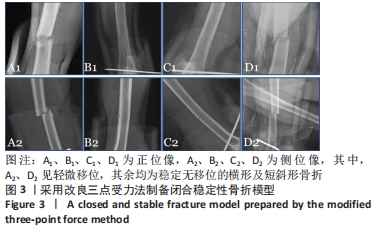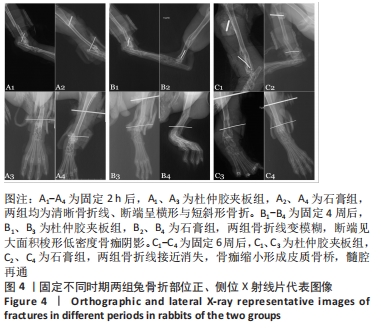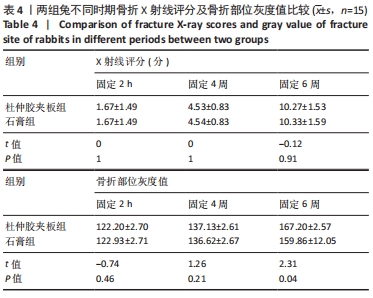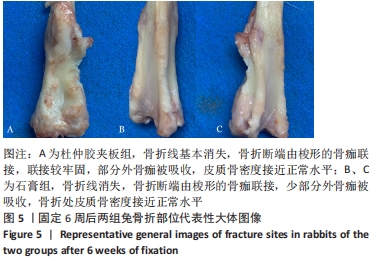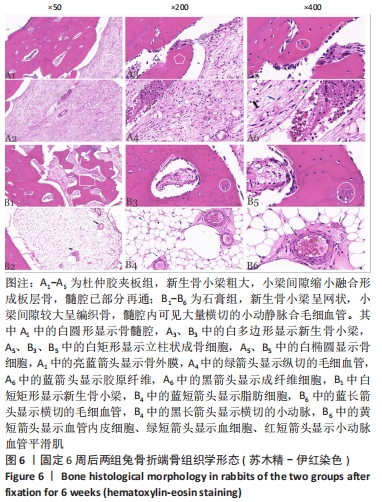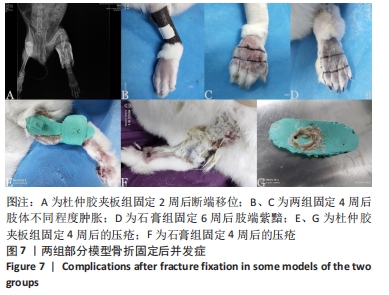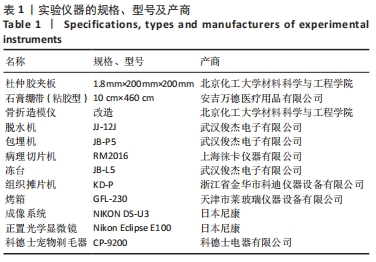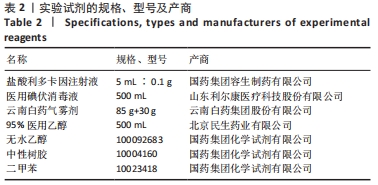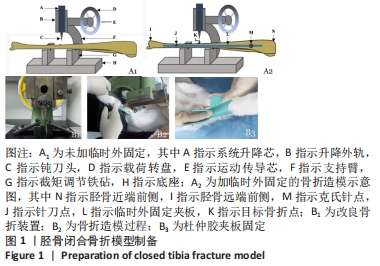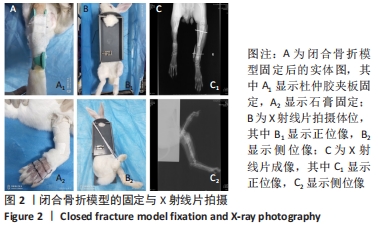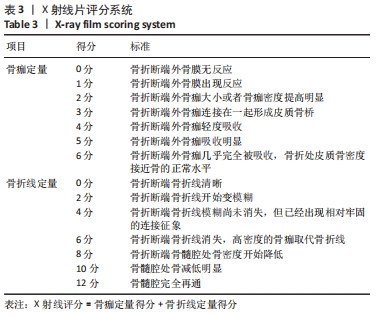中国组织工程研究 ›› 2023, Vol. 27 ›› Issue (7): 1055-1061.doi: 10.12307/2023.014
• 组织工程骨材料 tissue-engineered bone • 上一篇 下一篇
杜仲胶夹板固定兔骨折模型的疗效评价
张 伟1,黄致超2,赵锐锋3,梁 欢2,马玉峰1,申艳光4 ,钟红刚5,陈兆军1,张继川3,陈卫衡1
- 北京中医药大学第三附属医院,1骨伤中心,4放射科,北京中医药大学,北京市 100029;2北京中医药大学研究生院,北京市 100029;3北京化工大学材料科学与工程学院,先进弹性体材料研究中心,北京市 100029;5中国中医科学院骨伤研究所,北京市 100700
Efficacy of gutta-percha splint on a rabbit fracture model
Zhang Wei1, Huang Zhichao2, Zhao Ruifeng3, Liang Huan2, Ma Yufeng1, Shen Yanguang4, Zhong Honggang5, Chen Zhaojun1, Zhang Jichuan3, Chen Weiheng1
- 1Traumatology & Orthopedics Center, Third Affiliated Hospital of Beijing University of Chinese Medicine, Beijing 100029; 2Graduate School, Beijing University of Chinese Medicine, Beijing 100029; 3College of Materials Science and Engineering, Beijing University of Chemical Technology, Beijing 100029; 4Imaging Center, Third Affiliated Hospital of Beijing University of Chinese Medicine, Beijing 100029; 5Institute of Orthopedics, China Academy of Traditional Chinese Medicine, Beijing 100700
摘要:
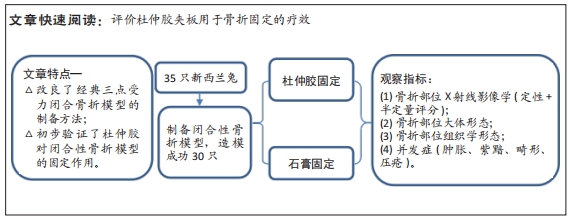
文题释义:
杜仲胶:是含于杜仲树的丝状物质,为一种天然高分子材料,具有橡塑二重特性,此力学性能有望为骨折愈合的弹性固定提供新材料。
闭合骨折模型:主要利用三点受力原理模拟长骨干骨折时的受力情况,借助带有重物的钝性铡刀从高处落下,折断胫骨或股骨则造模成功,具有可重复性高、与临床实际情况相似度高的优势,被广泛应用于骨折后愈合过程的研究。
背景:课题组成员前期研究发现杜仲胶的屈服强度较低,呈现硬而韧的力学性能,在此基础上研发了根据体型自由塑形的运动护具,并初步证实此性能可降低外界冲击力对运动员的伤害。
目的:评价杜仲胶夹板用于骨折固定的疗效。
方法:取35只成年雄性新西兰兔,采用改良三点受力法制备建立左侧胫骨闭合性骨折模型。将造模成功的30只兔随机分为2组,分别采用杜仲胶夹板和石膏进行外固定,每组15只。于固定后2 h、4周、6周进行X射线片检测,观察固定后骨折断端愈合情况;固定6周后,分别进行胫骨标本大体与组织学形态观察。
结果与结论:①X射线片:固定2 h后,两组均可见清晰骨折线,均未见明显骨膜反应;固定4周后,两组骨折线开始变模糊,断端见大面积梭形低密度骨痂阴影;固定6周后,两组骨折线接近消失,骨痂连接在一起形成皮质骨桥,骨髓腔部分已通、部分接近再通,固定6周后,杜仲胶夹板组骨折部位灰度值高于石膏组(P < 0.05);②大体观察:杜仲胶夹板组除3只出现畸形愈合外,其余兔骨折线基本消失,部分外骨痂被吸收,皮质骨密度接近正常水平;石膏组除4只出现畸形愈合外,其余兔骨折线消失,少部分外骨痂被吸收,皮质骨密度接近正常水平;③组织学形态:杜仲胶夹板组可见粗大的新生骨小梁,小梁间隙缩小融合形成板层骨,髓腔已部分再通;石膏组新生骨小梁呈网状,形成编织骨,髓腔内可见大量横切的小动静脉和毛细血管;④并发症:固定6周内,杜仲胶夹板组肢端肿胀、紫黯、移位及畸形愈合、局部压疮数量存在少于石膏组的趋势,但统计学分析比较差异均无显著性意义(P > 0.05);⑤结果表明,杜仲胶夹板对胫骨闭合性骨折兔模型可起到与石膏类似的固定作用。
https://orcid.org//0000-0001-8692-0913(张伟)
中国组织工程研究杂志出版内容重点:生物材料;骨生物材料;口腔生物材料;纳米材料;缓释材料;材料相容性;组织工程
中图分类号:
